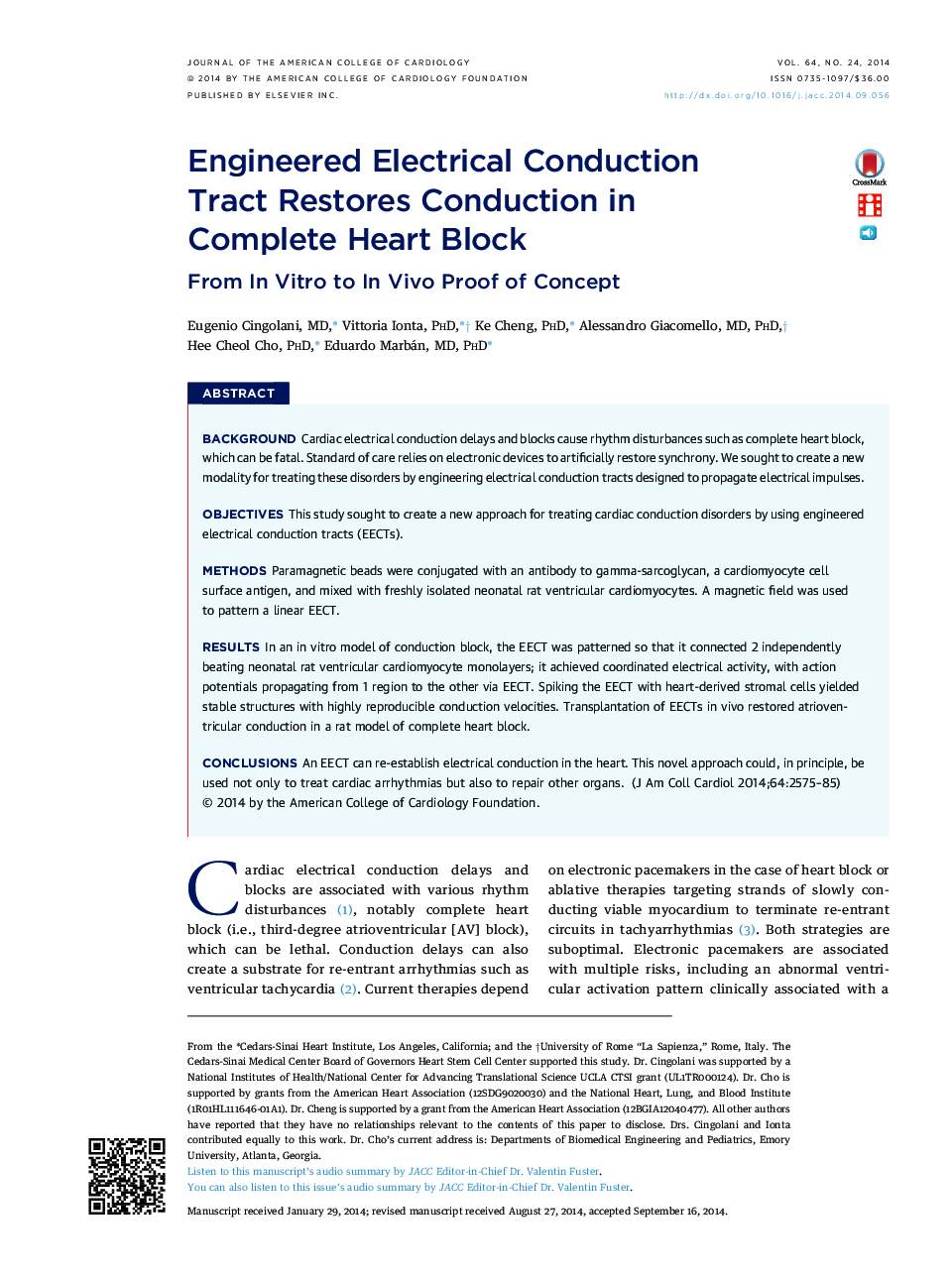| Article ID | Journal | Published Year | Pages | File Type |
|---|---|---|---|---|
| 5982902 | Journal of the American College of Cardiology | 2014 | 11 Pages |
BackgroundCardiac electrical conduction delays and blocks cause rhythm disturbances such as complete heart block, which can be fatal. Standard of care relies on electronic devices to artificially restore synchrony. We sought to create a new modality for treating these disorders by engineering electrical conduction tracts designed to propagate electrical impulses.ObjectivesThis study sought to create a new approach for treating cardiac conduction disorders by using engineered electrical conduction tracts (EECTs).MethodsParamagnetic beads were conjugated with an antibody to gamma-sarcoglycan, a cardiomyocyte cell surface antigen, and mixed with freshly isolated neonatal rat ventricular cardiomyocytes. A magnetic field was used to pattern a linear EECT.ResultsIn an in vitro model of conduction block, the EECT was patterned so that it connected 2 independently beating neonatal rat ventricular cardiomyocyte monolayers; it achieved coordinated electrical activity, with action potentials propagating from 1 region to the other via EECT. Spiking the EECT with heart-derived stromal cells yielded stable structures with highly reproducible conduction velocities. Transplantation of EECTs in vivo restored atrioventricular conduction in a rat model of complete heart block.ConclusionsAn EECT can re-establish electrical conduction in the heart. This novel approach could, in principle, be used not only to treat cardiac arrhythmias but also to repair other organs.
